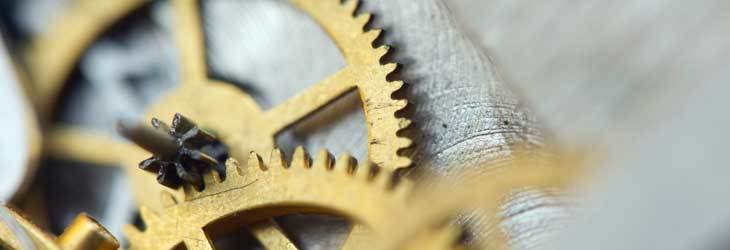What is silent reflux, also known as LPR (laryngopharyngeal reflux)?
Silent reflux means that acid and stomach enzymes are getting into the airways. This causes inflammation.
Understanding the mechanism of silent reflux is crucial for healing it.
Old Belief of What Silent Reflux Is: Only Acid Damage
Until a few years ago, most medical doctors thought that silent reflux is nothing other than damage caused by acids.
Heartburn patients usually get great relief acid suppression. So people thought that reflux is always a problem of acids rising. By eliminating those acids, any reflux problems should be solved – including silent reflux.
However, it is not that simple.
Damaging the throat and the airways through refluxed acid is definitely possible. However, most people simply do not reflux enough acid to explain the symptoms.
Another point is: doctors usually treat silent reflux with proton-pump-inhibitors (PPIs). Those suppress most of the acid production. If silent reflux were really a problem of acid damage, then those PPIs should bring patients great relief.
However, they do not.
On the contrary, most studies show that PPIs do not have any bigger effect on silent reflux symptoms than placebo.
I have written an article on why acid blocking medication is not very helpful for silent reflux.
New Belief of What Silent Reflux is: Damage Caused By Pepsin
So what is really causing silent reflux?
Just in the past few years, a new approach is gaining influence among researchers: silent reflux is caused by pepsins.
Pepsins are enzymes that are produced in the stomach. Their job is to digest proteins. During reflux, those pepsins get into the airways and penetrate your mucous membranes.
There they do their job: digesting proteins.
Guess what our cells are made of: proteins.
We digest ourselves.
Doesn’t sound so good, what?
Our stomach is protected against pepsins. Our throat and airways are not.
How does it look when pepsins digest our throat? Well, mostly it is just inflammation. That is why it is hard for doctors to recognize. The inflammation itself looks like any other inflammation – be it caused by an allergy or a virus.
Pepsins Are Reactivated By Acid
Usually, pepsins are inactive outside of the stomach. That is because they only work in an acidic environment.
But, every time another acid reflux happens they are reactivated. Same goes if we drink or eat something acidic.
That is the mechanism of silent reflux:
You reflux pepsins. Then they become reactivated by acid – and your mucus membranes get hurt.
In the following paragraphs, I will make that process clearer:
Phase 1: Initiation (the “actual” reflux)
This first phase lays the foundation for silent reflux.
Pepsin leaves the stomach and goes somewhere it does not belong. For example in the throat, lungs, nose or mouth. It can even get into the ears as they are connected with the nose.
Silent refluxers mostly have gaseous reflux that quickly distributes itself in the airways. That is contrary to heartburn (GERD) patients who have a liquid reflux – that usually stays in the esophagus.
When pepsins reach mucus membranes, they penetrate and can stay there – for quite a while.
Phase 2 – Reactivation (the damage is caused)
During the second phase, pepsins come in contact with acid.
Like I already mentioned, pepsins are reactivated as soon as they come in contact with acid.
Then they begin their job again: digesting proteins.
This means: they digest us.
Ouch!
The refluxed pepsin stays in and on your mucous membrane
Acid can be delivered to the pepsins in three ways:
First: you simply can have an acid reflux. Some people have more acid in their reflux than others. A few do not have any acid in their reflux.
Second: you can eat or drink acids. Particularly in the U.S., this is the biggest factor. Especially because many beverages are VERY acidic – for example cola, other sodas, and most juices. Also, canned foods contain too much acid. Even if you eat healthily – the chances are high that you come in contact with way more acids than you thought.
Third: the pepsins can also be reactivated inside of the mucus membrane. This is a pretty new discovery from scientists. Pepsins penetrate the mucosa till they reach areas that are slightly acidic. This reactivates the pepsins. They are only somewhat activated by that – pepsins get more active the higher the acidity is. However, it can be enough to be pretty annoying. Still, damages caused by reactivation from acidic food and beverages are way bigger.
Many Foods and Beverages are Very Acid
Cola has a pH of around 2.8 – that is about as acidic as pure lemon juice. For comparison: Water has a pH of about 7, our stomach acid is between pH 1 and 2.
Try to imagine drinking pure lemon juice – just by thinking about it my mouth feels funny.
In cola, however, there is so much sugar that you do not taste the acid.
The same goes for virtually all sodas.
Most juices are less acidic than soda. Orange juice has a pH of 3.8 – less acidic than sodas.
Most people would not say that orange juice is less acidic than soda. You see, it is hard to taste what is acidic and what is not. However, the damage is the same – whether you taste the acid or not.
A lot of canned food is acidic. In the U.S. that is even a law – acidity helps to kill bacteria. There are more healthy ways to do that – but the law is still there.
Silent Reflux Therapy Starts with Better Nutrition
“Modern” nutrition creates a high intake of acids.
This is one of the main reasons why more and more people suffer from silent reflux.
Most people bring their throat in contact with acids the whole day. Be it through juices, sodas or canned food.
Even many acidic foods that seem healthy – like fruit smoothies – can be a significant problem when one is already refluxing.
You can swallow as many acid blockers as you want – if you still swallow acidity your problems won’t get better.
Once you have silent reflux, it needs fewer amounts of pepsin and acid to keep your problems going. It is a vicious circle. It damages your natural barriers against reflux – fewer and fewer amounts of reflux are necessary to create the same harm.
To heal silent reflux, it is crucial to reduce reflux as well as acid intake as much as possible.
That helps the body to restore its own defenses.
To Sum Up: Silent Reflux is a Combination of Acid and Pepsin
Pepsin gets up into your airways where it can be reactivated by any kind of acid.
Then it starts its job – digesting.
That hurts your mucous membranes, causing inflammation.
Depending on where you have that inflammation it causes different symptoms – like a cough, hoarseness or a sore throat.
Do you want to know if your symptoms fit silent reflux? Check your symptoms in my online test.


